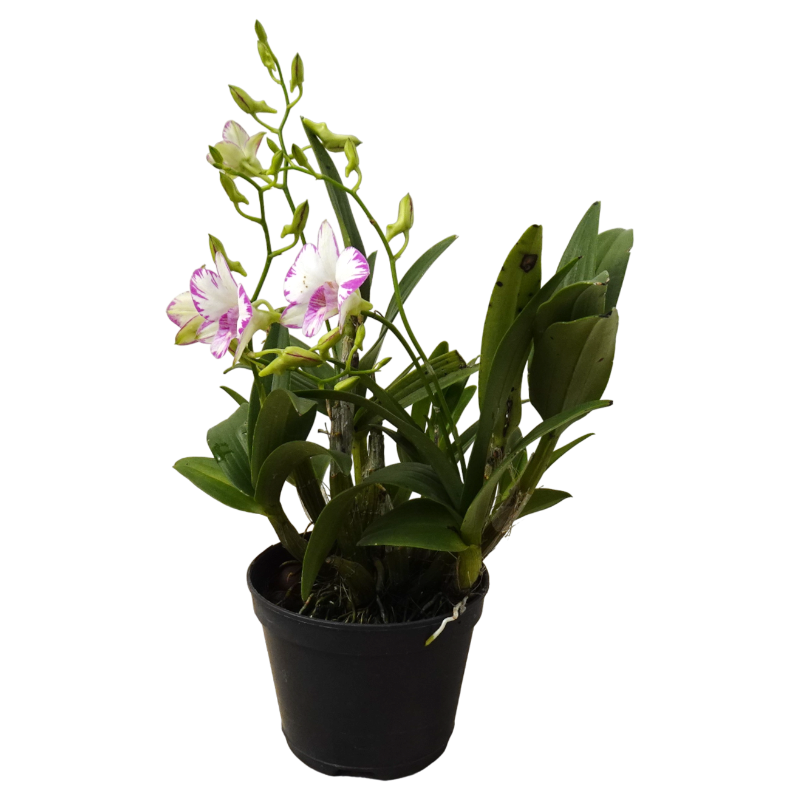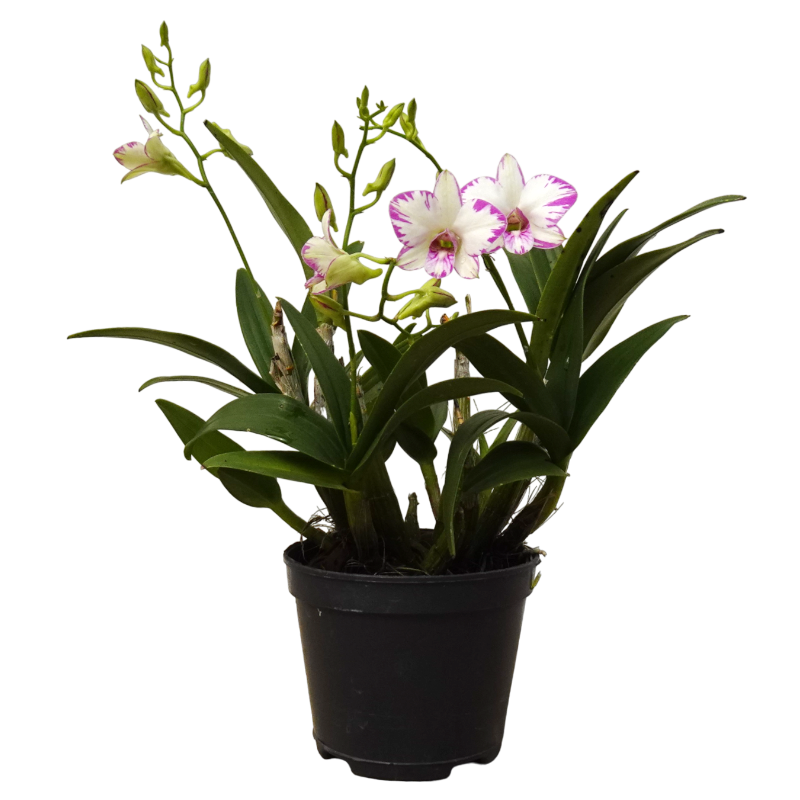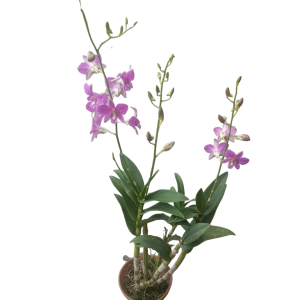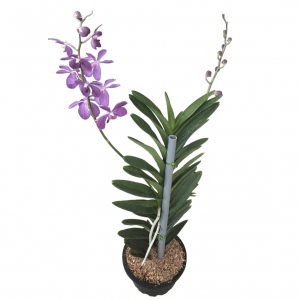Dendrobium spp., commonly known as Mini Orchids, are a group of stunning, compact orchids that belong to the vast and diverse Orchidaceae family. Native to tropical and subtropical regions of Asia, including Southeast Asia and parts of Australia, these miniature orchids are known for their vibrant, often fragrant flowers and their adaptability to a variety of growing conditions. The Mini Orchids typically feature thin, arching stems and narrow, leathery leaves that serve as an elegant backdrop to their striking blooms. The flowers come in a variety of colours, ranging from pure whites and pale pinks to vivid purples and yellows, making them a popular choice for collectors and enthusiasts. Unlike larger orchids, Dendrobium Mini Orchids are compact and well-suited for smaller spaces, hanging baskets, or as accent plants in larger displays. Their ease of care and beautiful blooms make them a favourite for both beginners and experienced orchid growers.
Plant Care Guide:
Light: Mini Orchids thrive in bright, indirect light. They do best when placed in a location where they receive plenty of filtered sunlight, such as near a window with sheer curtains. Direct sunlight can scorch their delicate leaves, so avoid placing them in direct sun for prolonged periods.
Watering: Water regularly to keep the growing medium slightly moist but not soggy. Dendrobium orchids are sensitive to overwatering, so allow the top 1–2 cm of the medium to dry out between waterings. Water the plant thoroughly, ensuring that excess water drains freely from the pot. In between watering, ensure the orchid is not sitting in standing water, as this can lead to root rot.
Humidity: Mini Orchids prefer a humid environment, with humidity levels ranging between 50% to 70%. To maintain adequate humidity, consider placing a humidity tray under the pot or misting the plant lightly. However, avoid over-wetting the leaves, as this can lead to fungal issues.
Temperature: These orchids thrive in warm temperatures ranging from 18–28°C during the day and around 16–20°C at night.
Soil: Mini Orchids grow best in well-draining orchid bark, sphagnum moss, or a specialised orchid potting mix that allows for good airflow around the roots. Avoid using standard potting soil, as it retains too much moisture and can suffocate the roots.
Fertilising: Apply a balanced, water-soluble orchid fertiliser during the growing season (when the plant is actively producing new growth and flowers). Use a diluted solution to avoid over-fertilisation. During the resting period, reduce fertiliser application or stop altogether.
Pruning: Once the flowers have faded, it is helpful to trim off the spent flower spikes to encourage new growth and maintain the plant’s tidy appearance. Cut the flower spike just above the node where the bloom originated. This can encourage the development of side shoots or new spikes in the future.
Pests: Dendrobium Mini Orchids are generally pest-resistant, but they can occasionally attract aphids, mealybugs, or spider mites. Regularly inspect the plant for signs of pests and treat with an insecticidal soap or neem oil if necessary. Ensure good air circulation to prevent fungal and bacterial infections.Lighting: Bright Filtered Light
Watering: Water Thoroughly
Watering Frequency: When top layer of soil is dry
Mealy Bugs: Mealy bugs are small insects that feed on plant sap and can cause damage and transmit diseases. To control them, you can physically remove them, introduce natural enemies, or use insecticidal soap or neem oil. It’s important to monitor plants regularly and act quickly to prevent damage..
Root rot: This can occur if the soil is kept too wet or if the plant is overwatered. Symptoms include wilting, yellowing leaves, and a foul odor from the soil. To prevent this, make sure to use well-draining soil and avoid overwatering..
PLANTS ATE MY MONEY Kiwi Orchid Mix (PRO).
RYNAN Orchidmate 220 NPK 12-12-20+TE: Every 3 Months.





